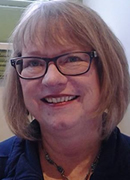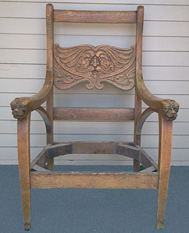NCHN Blog
From the Executive Director: Chairs of Network Leadership (August 2014)
 August. Summer vacations are coming to an end, kids are getting ready, or have already, started back to school, mornings feel cooler, afternoons are hot, and we start thinking about fall activities. Does your network have an ebb and flow cycle? Do you offer certain activities or conduct certain functions in the fall? Why don’t you share with your peers across the country some of the fall activities of your network? We would love to hear from you, just send a short description of the activity/event to me or Christy and we will feature them in future issues of the e-News!
August. Summer vacations are coming to an end, kids are getting ready, or have already, started back to school, mornings feel cooler, afternoons are hot, and we start thinking about fall activities. Does your network have an ebb and flow cycle? Do you offer certain activities or conduct certain functions in the fall? Why don’t you share with your peers across the country some of the fall activities of your network? We would love to hear from you, just send a short description of the activity/event to me or Christy and we will feature them in future issues of the e-News!
NCHN has traditionally held our Leadership Summit in the fall. This year we are changing it to January 2015 and are in the final stages of deciding on a location. We are looking for someplace warm in January and possibility with a beach! So, watch for more details in the September e-News.
This month, we also welcome a new member, Washington Rural Health Collaborative. Holly Greenwood is the Executive Director. We welcome her and the network to NCHN.
 I am going to start a series, Chairs of Network Leadership. If I put it here, then I’m committed to doing it! Last week, I purchased an antique wicker chair at the Hospices parking lot sale here in Montrose. In telling Christy about the purchase, I made the comment that we were really “chair poor” meaning that we had a lot of chairs. That got me to thinking about how many chairs I actually do have, and on my preliminary count I was close to 60 chairs. Now, by chairs, I’m talking about a single chair, including recliners, rocking chairs, dining room chairs, lounge chairs, outdoor chairs, etc. I am going to take an inventory and address this potential chair issue I may have uncovered! Christy suggested I start a blog about my chairs, as I told her most every chair had a story. So, then I started thinking, why and how have I ended up with so many chairs in my life? What do they or could they reveal about me? Maybe not a thing, just that I have a compulsion of purchasing chairs? I will admit in this “thinking about writing about a chair series” rambling that I decided that I should probably begin to address the chair issue. So, the next day I took a chair and donated it to Hospices. I told the lady that I decided I needed to take one out, since I had brought a new one home the day before. She said that worked for them!
I am going to start a series, Chairs of Network Leadership. If I put it here, then I’m committed to doing it! Last week, I purchased an antique wicker chair at the Hospices parking lot sale here in Montrose. In telling Christy about the purchase, I made the comment that we were really “chair poor” meaning that we had a lot of chairs. That got me to thinking about how many chairs I actually do have, and on my preliminary count I was close to 60 chairs. Now, by chairs, I’m talking about a single chair, including recliners, rocking chairs, dining room chairs, lounge chairs, outdoor chairs, etc. I am going to take an inventory and address this potential chair issue I may have uncovered! Christy suggested I start a blog about my chairs, as I told her most every chair had a story. So, then I started thinking, why and how have I ended up with so many chairs in my life? What do they or could they reveal about me? Maybe not a thing, just that I have a compulsion of purchasing chairs? I will admit in this “thinking about writing about a chair series” rambling that I decided that I should probably begin to address the chair issue. So, the next day I took a chair and donated it to Hospices. I told the lady that I decided I needed to take one out, since I had brought a new one home the day before. She said that worked for them!
So, I challenge you this next month, as we begin to move into fall, think about “chairs” you may have in your network. Do you seem to collect the same type of
programs and services? When you start a new program, do you consider using it as a replacement to a similar program or service? Or do you just keep adding new programs and allowing older ones that may not be as effective or useful to hang around? Have you taken inventory of what your network offers recently and analyzed the offerings to determine if they are the best fits for your members. Will the programs and services change and develop as the needs of your members change? Have you counted your chairs lately?
Rebecca J. Davis, Ph.D.
Executive Director
2013 NCHN Leadership Summit
 Jay Seifert is the co-founder of LoneStart Wellness. He is a pioneer in applying established principles of social neuroscience and behavioral economics to individual and organizational “wellness.” His strategy is specifically designed to improve the health and well-being of those individuals most at risk for preventable chronic illness but least likely to participate in traditional “diet and exercise” programs. He is a monthly wellness guest columnist and you can see his columns in the first NCHN e-News of the month or right here on the blog.
Jay Seifert is the co-founder of LoneStart Wellness. He is a pioneer in applying established principles of social neuroscience and behavioral economics to individual and organizational “wellness.” His strategy is specifically designed to improve the health and well-being of those individuals most at risk for preventable chronic illness but least likely to participate in traditional “diet and exercise” programs. He is a monthly wellness guest columnist and you can see his columns in the first NCHN e-News of the month or right here on the blog.
The 2013 NCHN Leadership Summit
It’s my fondest expectation that I will see many of you at this year’s Summit, which begins today in Austin. For those of you who aren’t attending, I regret that you won’t be here to enjoy Austin’s many charms and take advantage of the absolutely gorgeous early-fall weather we’re having. And since you won’t be able to attend my presentation, here’s a synopsis of what we’ll be covering.
The official title of the presentation is:
How to Have Fun and Find Success with Leadership
And Organizational Health and Become
More Popular and Better Looking in the Process
(I wanted to share that with you in order to make you feel better about missing this year’s summit.) Actually, everything we mention in that title can happen. The question is, does it create the realistic expectation that it will happen? If you’ve been following these monthly posts, you know that when it comes to intrinsically-motivated behavior change, expectations are everything.
Today’s network directors face unprecedented real-world challenges and the last thing we want to do is create a set of unrealistic expectations about what is and is not possible. So here’s the “Keeping it Real” title of our presentation, something more in line with what a network director might be thinking:
Say What? This can’t be Fun. I’m already a Successful Leader. Organizational Health is an Unattainable Myth. Who Needs Popular? And as For “Better Looking,” How do you Improve upon Perfection?
So my job during the presentation is to respond to each of these challenges by:
- Telling the truth
- Sharing what we’ve learned over the last 8 years
- Creating the realistic expectation that today’s NCHN director already possesses every skill, every resource, all the knowledge and the opportunity to improve the health status of their networks, their partners and the communities they serve.
And we have to be able to do so with a full understanding of the many profound challenges facing today’s rural healthcare providers.
We’ll explore:
- What is the leader’s role?
Providing the vision and inspiration necessary for constructive change is only the beginning. But what is realistically possible? - Burden or opportunity?
How a subtle, but fundamental shift in perspective can make the difference between success and failure. - Carrot or stick (or none of the above)?
Do your employees believe the initiative is being done to them or for them? - Top-down or bottom-up?
While the organization’s leaders must start the process, its sustainability will depend on whether its employees have taken ownership of the initiative. - Team-building
A well-defined, short-cycle team-building challenge will much more than increase health status. It will improve communication, morale, and engagement while strengthening a shared sense of mission. - Emerging leaders
When your employees believe that everyone, regardless of their condition, has something to contribute, as well as something to gain, and they prove that they can be successful; they become powerful influencers within the organization.
This will give you some sense of what we’ll be covering at the summit. Unfortunately, having fun, getting a better personality and becoming better looking only happen at the summit. Hope to see you next year.
If you have questions or issues you would like us to address in this column, contact: Jay Seifert at 512-894-3440 or jseifert@lonestartnow.com.
From the Executive Director (September 2013)
 This morning I was reading the Family & Friends article by Marlo Thomas in the August-September 2013 issue of “AARP The Magazine” and thought how appropriate for network leaders: The School of Life: When your education ends, the learning really begins.
This morning I was reading the Family & Friends article by Marlo Thomas in the August-September 2013 issue of “AARP The Magazine” and thought how appropriate for network leaders: The School of Life: When your education ends, the learning really begins.So, plan your outfit (old ones will do just fine) to wear to the NCHN Leadership Summit and don’t worry about a hat – as we will have the perfect one there for you! Don’t miss the fun, the learning, and the opportunity to connect with your peers in Austin!
